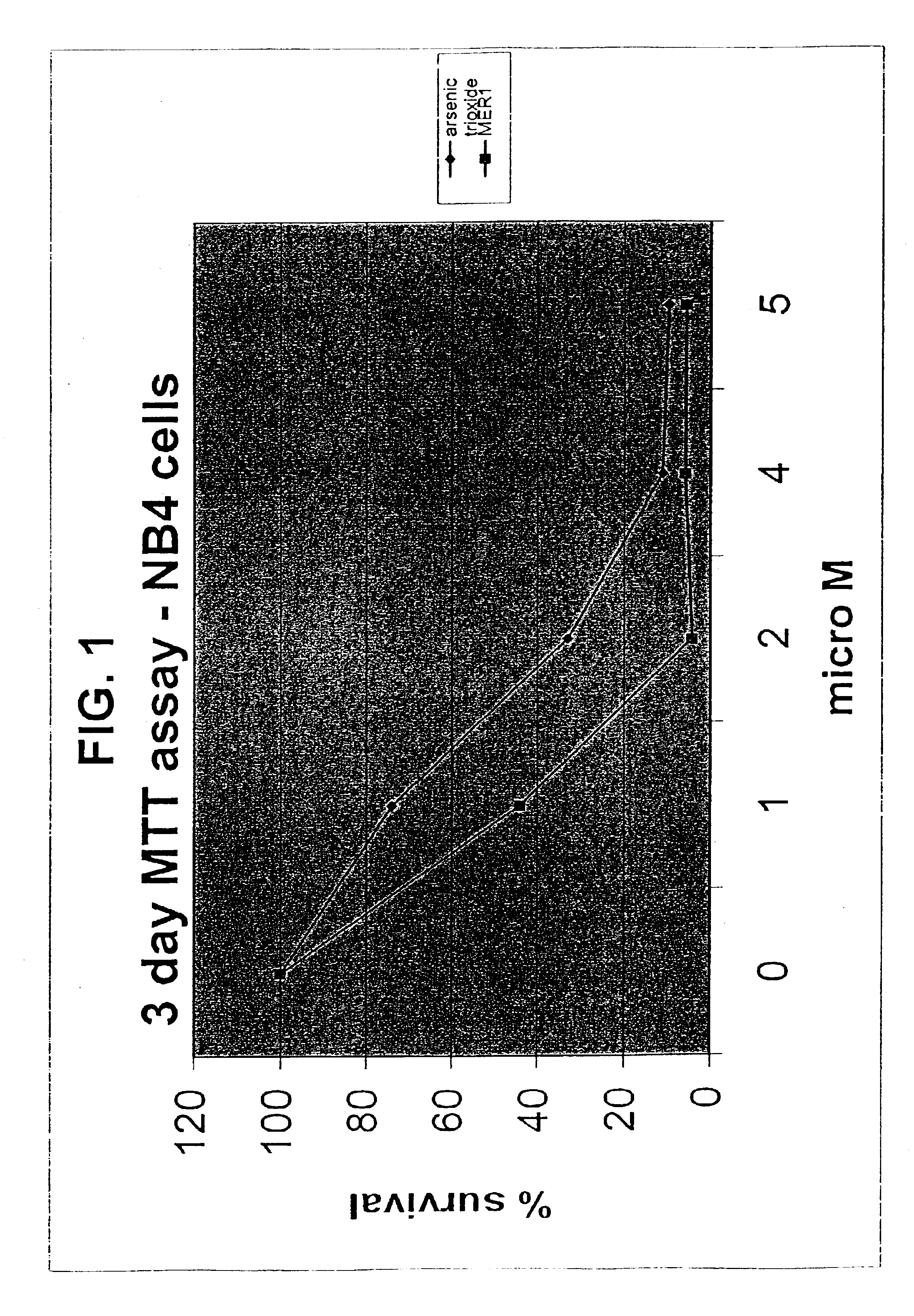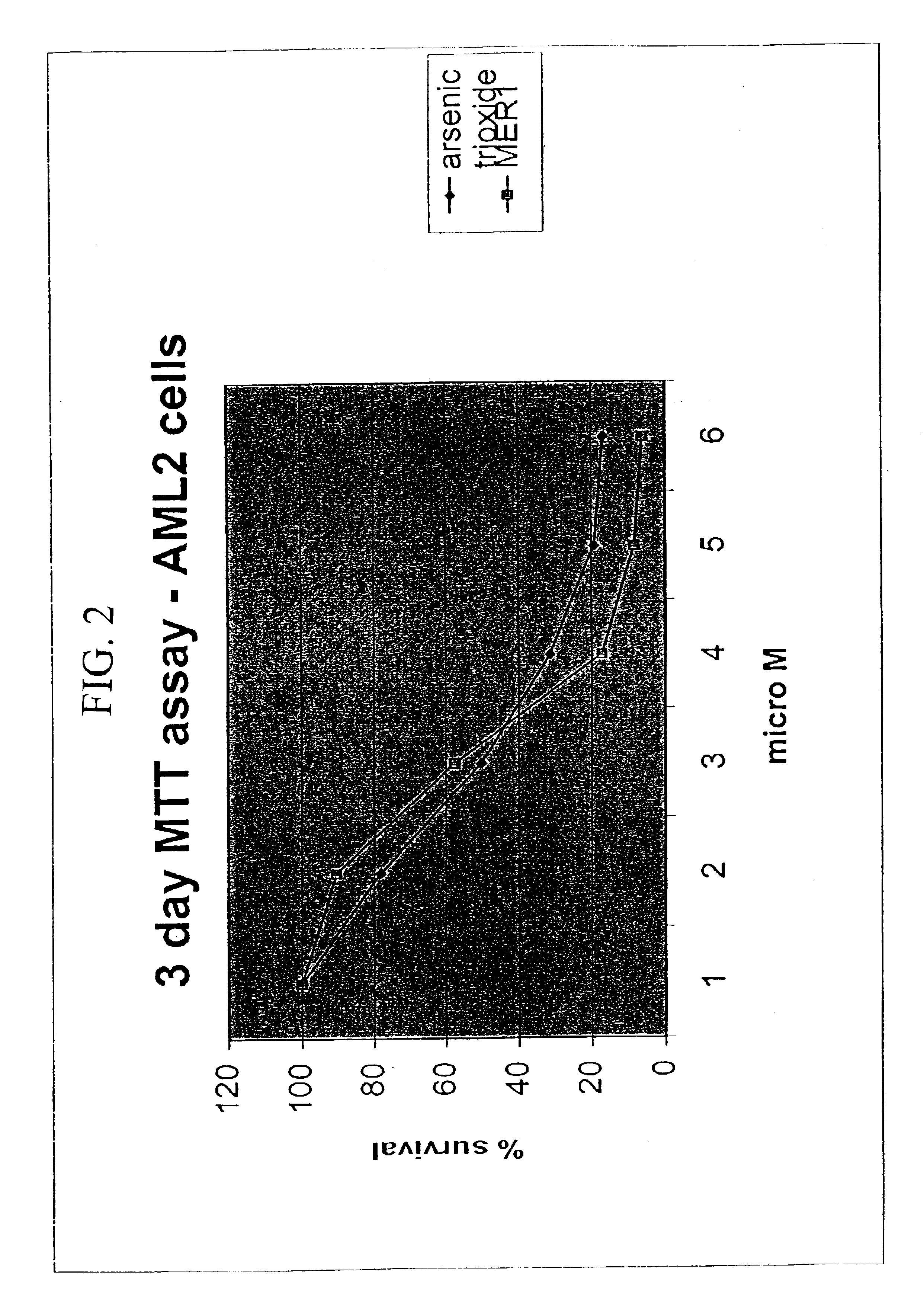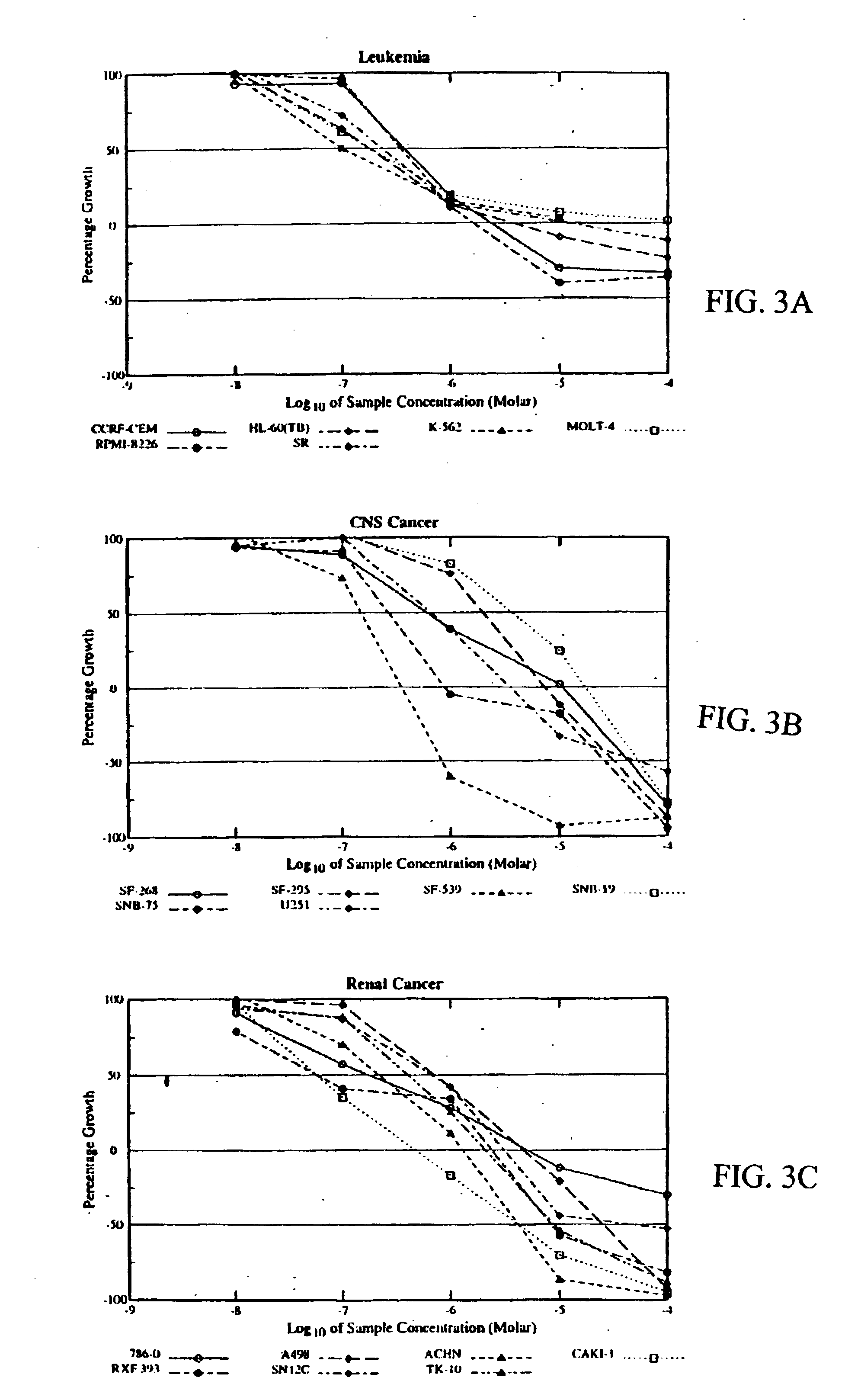S-dimethylarsino-thiosuccinic acid s-dimethylarsino-2-thiobenzoic acid s-(dimethylarsino) glutathione as treatments for cancer
a technology of sdimethylarsenic acid and sdimethylarsenic acid, which is applied in the field of anticancer therapy, can solve the problems of excessive toxicity of compounds for patients with leukemia, limited use of arsenic trioxide, and systemic toxicity of arsenic trioxid
- Summary
- Abstract
- Description
- Claims
- Application Information
AI Technical Summary
Benefits of technology
Problems solved by technology
Method used
Image
Examples
example 1
Synthesis of S-dimethylarsino-thiosuccinic Acid (MER1), S-dimethylarsino-salicylic Acid (SAL1), and S-(dimethylarsino) glutathione (SGLU1)
[0086]MER-1: Mercaptosuccinic acid, 4.5 g, was placed in 100 ml of glyme (1,2-dimethoxyethane) in a 250 ml round-bottom flask. Four ml of dimethylchloroarsine (0.03 mol) was added drop-wise, followed by 4 ml of diethylamine (0.04 mol), again drop-wise. The reaction mixture was stirred for 20 h at room temperature. A white precipitate of diethylamine hydrochloride was formed and was separated by filtration. The solution of MER1 in the glyme was greatly reduced in volume by evaporation at reduced pressure. White crystals of MER1 were separated by filtration and washed with cold distilled water. The colorless crystalline product was then recrystallized from ethanol-water to a constant melting point of 150° C.
[0087]SAL-1: In a 100 ml flask 5 g of 2-mercapto benzoic acid (thiosalicylic acid), 75 ml of glyme, 5 ml of dimethylchloroarsine, and 5 ml dieth...
example 2
[0090]A variety of in vitro assays were used to determine the response of cancer cells to the arsenical compounds, compositions, and / or formulations of the present invention. Some of the responses assayed included cell survival, cell cycle, apoptosis, and maturation. The present inventors also designed an assay to evaluate the requirement of the PML / RARalpha gene in cancer cells for sensitivity to the arsenical compositions of the invention. Provided below is a description of these assays:
[0091]Sulforhodamine B Assay. Various human cancer cells were incubated on a microtiter plate with or without indicated concentrations of MER1, SAL1 or SGLU1 for 48 hours, and then sulforhodamine B dye was added to the cultures. The sulforhodamine B dye is a protein binding dye and labels live cells. Results are reported as the percent growth of treated cells when compared to untreated control cells (negative data indicate cell kill).
[0092]MTT and Trypan Blue Assays. Fo...
example 3
In Vitro Evaluation of Anticancer Activity of MER1, SAL1, and SGLU1
[0102]The anti-leukemic activity of MER1 has been evaluated by 3 day MTT assay / trypan blue exclusion method against 6 different human leukemia cell lines: AML2, AML3 and HL60 (an AML derived cell line), NB4 (an APL derived cell line), K562 (a CML-BP derived cell line), and KBM7 (an AML derived cell line). MER1 was most effective against NB4 cells with an IC50 (the concentration that results in 50% survival of cells, as compared to untreated control cells) at 1 μM (FIG. 1). MER1 treatment of other cell lines, including the analysis of AML2 cells and KBM7 cells by the MTT assay and AML2 cells (see FIG. 2), AML3 cells, K562 cells, and HL60 cells by the trypan blue assay showed IC50 between 1.5-4 μM. This activity was similar to the activity of arsenic trioxide against these cell lines (examples of arsenic trioxide activity are shown in FIG. 1 and FIG. 2). MER1 was also tested for anticancer activity by the National Inst...
PUM
 Login to View More
Login to View More Abstract
Description
Claims
Application Information
 Login to View More
Login to View More - R&D
- Intellectual Property
- Life Sciences
- Materials
- Tech Scout
- Unparalleled Data Quality
- Higher Quality Content
- 60% Fewer Hallucinations
Browse by: Latest US Patents, China's latest patents, Technical Efficacy Thesaurus, Application Domain, Technology Topic, Popular Technical Reports.
© 2025 PatSnap. All rights reserved.Legal|Privacy policy|Modern Slavery Act Transparency Statement|Sitemap|About US| Contact US: help@patsnap.com



